第52章 MONEY OR SIMPLE CIRCULATION(33)
The evolution of the circulation process thus turns selling into a social necessity for him,quite irrespective of his individual needs.As a former buyer of commodities he is forced to become a seller of other commodities so as to obtain money,not as a means of purchase,but as a means of payment,as the absolute form of exchange-value.The conversion of commodities into money as a final act,or the first metamorphosis of commodities as the ultimate goal,which in hoarding appeared to be the whim of the commodity-owner,has now become an economic function.The motive and the content of selling for the sake of payment constitutes the content of the circulation process,a content arising from its very form.
In this type of sale,the commodity moves from one position to another,although its first metamorphosis,its conversion into money,is deferred.
On the buyer's side,however,the second metamorphosis is carried through,i.e.,money is reconverted into commodities,before the first metamorphosis has taken place,i.e.,before the conversion of the commodities into money.
In this case,therefore,the first metamorphosis appears to take place later than the second.Hence money,the form of the commodity in its first metamorphosis,acquires a new distinctive aspect.Money,that is the independent development of exchange-value,is no longer an intermediary phase of commodity circulation,but its final result.
No proof in detail is needed to show that such purchases on credit ,in which the two poles of the transaction are separated in time,evolve spontaneously on the basis of simple circulation of commodities.At first it happens that in the course of circulation certain commodity-owners confront one another repeatedly as buyers and sellers.Such repeated occurrences do not remain merely accidental,but commodities may,for example,be ordered for a future date at which they are to be delivered and paid for.The sale in this case takes place only nominally,i.e.,juridically,without the actual presence of commodities and money.The two forms of money,means of circulation and means of payment,are here still identical,since on the one hand commodities and money change places simultaneously,and on the other,money does not purchase commodities but realises the price of commodities previously sold.Moreover,owing to the specific nature of a number of use-values they are really alienated not by being in fact handed over but only by being leased for a definite period.For example,when one sells the use of a house for a month,its use-value is delivered only at the expiration of the month,although the house changes hands at the beginning of the month.Because in this case the actual transfer of the use-value and its real alienation are separated in time,the realisation of its price also takes place later than the date on which it changes hands.
Finally,owing to differences in the period and length of time required for the production of different commodities,one producer comes to the market as a seller before the other can act as a buyer,and if the same commodity-owners repeatedly buy and sell one another's products,the two aspects of the transaction are separated according to the conditions of production of their commodities.This gives rise to relations of creditor and debtor among commodity-owners.These relations can be fully developed even before the credit system comes into being,although they are the natural basis of the latter.It is evident however that the evolution of the credit system,and therefore of the bourgeois mode of production in general,causes money to function increasingly as a means of payment to the detriment of its function both as a means of purchase and even more as an element of hoarding.For instance in England,coin is almost entirely confined to the sphere of retail trade and to petty transactions between producers and consumers,whereas money as means of payment predominates in the sphere of large commercial transactions.[3]
Money as the universal means of payment becomes the universal commodity of contracts,though at first only within the sphere of commodity circulation.[4]But as this function of money develops,all other forms of payment are gradually converted into payments in money.The extent to which money functions as the exclusive means of payment indicates how deep-seated and widespread the domination of production by exchange-value is.[5]